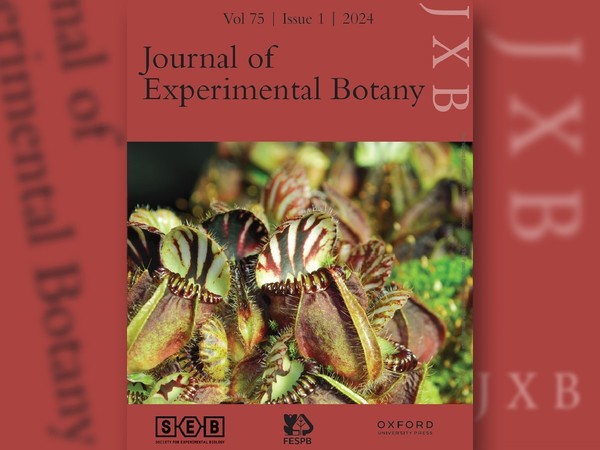During their evolution, carnivorous plants have developed various ways of regulating the digestion of their prey. Some carnivores activate a sophisticated system of digestive enzyme production using phytohormones once an insect is trapped. Other carnivorous plants, however, produce digestive enzymes without the need for external stimuli. This was discovered by UP Faculty of Science scientists from the Department of Biophysics.
The results of their long-term research on the regulation of digestion in various lineages of carnivorous plants were published in the renowned Journal of Experimental Botany, in which they earned a commentary from world-renowned plant physiologist Joanne Chory of the Salk Institute for Biological Studies in the United States and made the cover of the issue. The article subsequently caught the attention of the scientific editors in a paper published in Nature Plants journal.
During their evolution, carnivorous plants have responded to nutrient deficiencies in the soil, evolving at least eleven times independently in different lineages. They are therefore a textbook example of “convergent evolution”, a process by which unrelated organisms living in the same environment develop similar adaptations. One example would be a whale, which looks like a fish because it lives in water, but is actually a mammal. In the case of carnivorous plants, the ability to lure, capture and digest animal prey, from which carnivorous plants obtain the nutrients necessary for their growth and reproduction, has repeatedly evolved in nutrient-deficient environments.
Andrej Pavlovič from the Department of Biophysics has devoted himself to the issue of digestion of carnivorous plants for some time. “Around 2013, together with colleagues from the Laboratory of Growth Regulators, we discovered that iconic and well-known carnivorous plants such as the flytrap (Dionaea) and sundew (Drosera) use phytohormones from the jasmonate class to regulate the production of digestive enzymes,” he said.
Jasmonates commonly serve to activate plants’ defense mechanisms. They usually accumulate after an attack by a pathogenic organism or herbivore and then activate the synthesis of defence molecules directed against these organisms. “For example, increased jasmonate-induced synthesis of nicotine in tobacco is well known. It may be advantageous for smokers, but caterpillars do not like a leaf with a high concentration of nicotine so much. The tobacco plant defends itself against insect pests this way,” explained Pavlovič.
Less well known is, for example, increased production of the enzyme chitinase, which digests the cell walls of pathogenic fungi composed of chitin. However, chitin is also contained in the outer exoskeleton of insects. Carnivorous plants have therefore adopted this defensive signalling pathway, but instead of using it to defend, they use it to attack. “Once an insect comes into contact with the deadly leaves of a sundew or flytrap, mechanical stimuli in the plant induce electrical signals that initiate the production of jasmonates, which then synthesize digestive enzymes, including chitinases, that rapidly digest the prey’s body,” said the scientist.
These carnivorous plants have thus perfectly copied the defensive reactions of plants, in which the accumulation of jasmonates is also often preceded by the generation of electrical signals, especially after an attack by an herbivore. “However, the new publication shows that this strategy evolved only once in carnivorous plants, about 85 million years ago in the order Caryophyllales. Other evolutionarily younger carnivorous plants do not use jasmonates to regulate the secretion of digestive enzymes. Instead, they synthesize digestive enzymes without any stimuli or their secretion is regulated developmentally – ontogenically. Why this is the case remains a mystery,” added Pavlovič.
According to Pavlovič, the evolution of the regulation of the digestive system of carnivorous plants is apparently not as straightforward as scientists had previously assumed. Despite the convergent evolution that guided the development of carnivorous plants as a whole in nutrient-poor environments, individual evolutionary lineages of carnivorous plants were likely subjected to different environmental selection pressures, leading to different ways of regulating the digestion of animal prey, despite using very similar enzymes. “The initial discovery of the function of jasmonates in carnivory regulation is thus the exception rather than the rule,” pointed out Carl Procko and Joanne Chory in their commentary.
